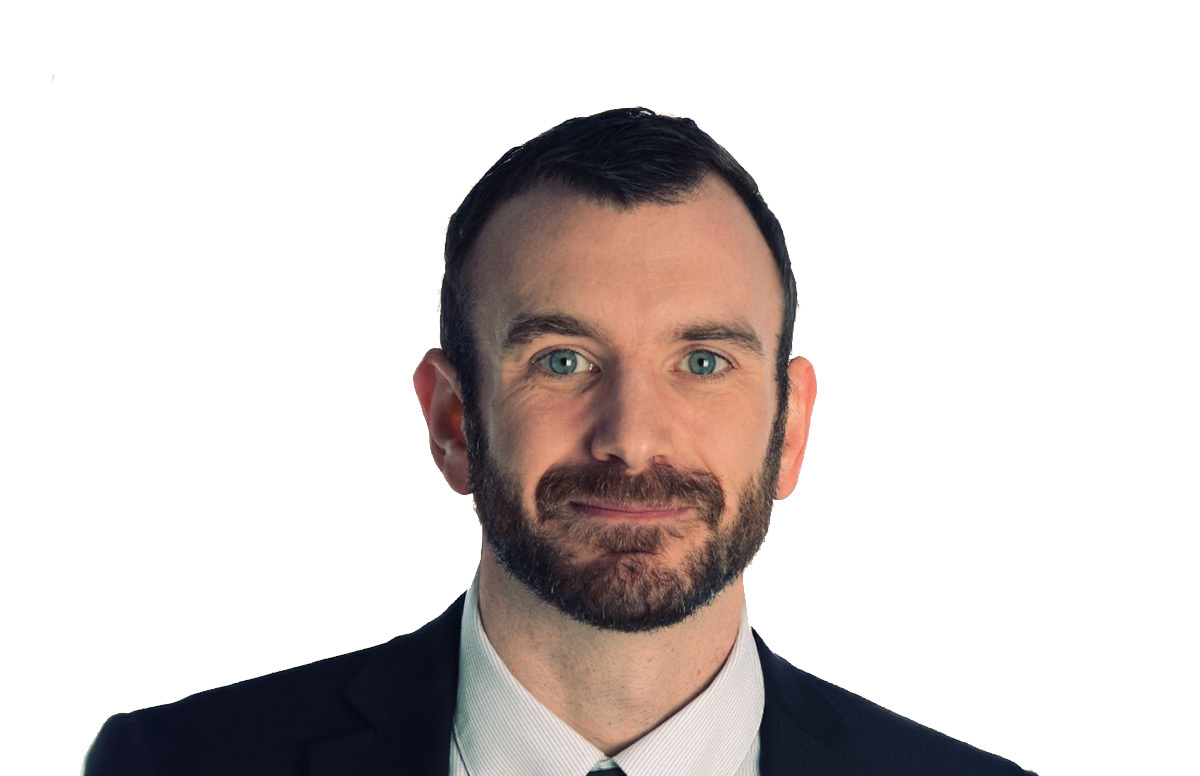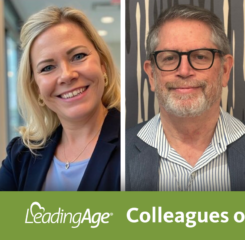When LeadingAge member United Methodist Communities (UMC) began exploring how artificial intelligence (AI) could support operations, executives knew the approach had to center on people—especially staff and residents. Travis Gleinig, a CAST Commissioner and the vice president of innovation and chief information officer at UMC, keeps that vision in mind while leading AI initiatives at this New Jersey-based community. At the same time, he’s actively engaged in various tech-focused initiatives in which he helps to guide conversations around responsible technology use in aging services, both around and outside of the U.S.
Participating at a recent global roundtable on AI in social care, hosted by Scottish Care, the Global Aging Network, the National Care Forum, and the Ontario Long Term Care Association, Gleinig shared UMC’s perspective: use AI as a supportive, not prescriptive, tool. “Care staff should never say, ‘I did what the AI told me,’” he said. “AI should inform, not make, decisions.” That philosophy has helped UMC shape its innovation efforts to prioritize trust, training, and transparency.
A crucial component of enacting its philosophy, Gleinig said, is building AI literacy across the organization. The fast pace of AI advancement requires commitment and investment. “It feels like chasing your tail. What used to take a few months now takes a few days—or less,” he noted at the roundtable. “It’s unlike anything aging services has experienced before.”
To keep up, UMC is offering ongoing education to help staff understand what AI is, how it works, and where it should be applied. The training includes helping team members evaluate the trustworthiness of AI tools, understand the tools’ limitations, and identify how and where using AI could improve efficiency without disrupting the human aspects of care.
Gleinig emphasized that the way AI is introduced can influence whether residents and families trust it. Many are open to new tools, especially if they understand how these can enhance safety, health, or quality of life. AI-enabled smart sensors or assistants, for instance, might initially raise concerns about privacy. But when the conversation is framed around autonomy, emergency response, or avoiding hospitalizations, residents often become more receptive. “The value has to be clear,” he said. “When residents understand what they’re getting out of it, they’re far more likely to engage.”
To ensure new tools are effective before broad deployment, UMC often begins pilots in its memory care settings, where resident needs are high and technology must be intuitive, discreet, and meaningful. If a solution works in memory care, Gleinig said, it’s much easier to scale elsewhere in the organization. That method has helped UMC avoid fragmented implementation and focus instead on scalable, integrated solutions.
Gleinig is also helping to connect the dots between on-the-ground experience and broader aging services sector strategy. To the roundtable’s international conversation about AI’s ethical and effective implementation in aging services, he brought a practical and relevant point of view. Discussion host Dr. Donald Macaskill, CEO of Scottish Care, affirmed Gleinig’s approach. “I think many of us would be able to relate to that sense of trying to keep up with AI,” Macaskill said. “What you’re doing, Travis,…focusing on literacy and culture across the organization… really resonates with what we’re hearing across the globe.”
In particular, Gleinig sees a growing need for stronger partnerships between providers and technology developers—ones that allow innovation to happen without overburdening care teams. “Providers shouldn’t have to carry the full weight of testing and adopting new technologies on their own,” he said. “We need more structured ways to collaborate and scale what works.”
UMC will continue expanding its use of AI with a focus on resident engagement, clinical insight, and workforce support. At the same time, Gleinig and his team are doubling down on the human element by ensuring that every new tool enhances relationships, preserves dignity, and aligns with the organization’s mission.

 Shutdown Week Three: Impact of Ongoing Closure on Affordable Housing
Shutdown Week Three: Impact of Ongoing Closure on Affordable Housing Colleagues on the Move, December 17, 2025
Colleagues on the Move, December 17, 2025


